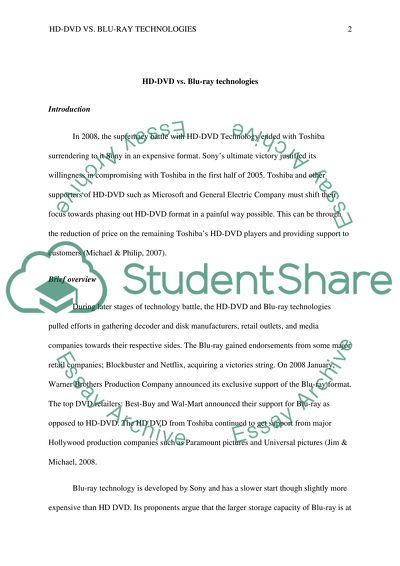Cite this document
(“HD-DVD versus Blu-ray Research Paper Example | Topics and Well Written Essays - 1000 words”, n.d.)
Retrieved from https://studentshare.org/information-technology/1696264-hd-dvd-versus-blu-ray
Retrieved from https://studentshare.org/information-technology/1696264-hd-dvd-versus-blu-ray
(HD-DVD Versus Blu-Ray Research Paper Example | Topics and Well Written Essays - 1000 Words)
https://studentshare.org/information-technology/1696264-hd-dvd-versus-blu-ray.
https://studentshare.org/information-technology/1696264-hd-dvd-versus-blu-ray.
“HD-DVD Versus Blu-Ray Research Paper Example | Topics and Well Written Essays - 1000 Words”, n.d. https://studentshare.org/information-technology/1696264-hd-dvd-versus-blu-ray.


